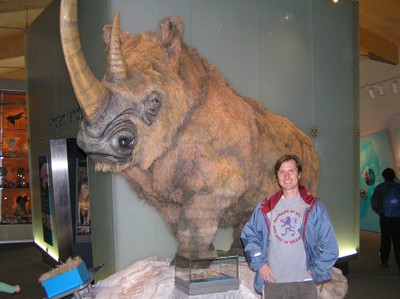About
I have been doing archaeological fieldwork in Portugal since 1993. My research interests focus on prehistoric human land-use and decision-making as part of a socio-natural process. I use a multi-scale approach to understand how past humans, especially Neanderthals and Upper Paleolithic modern humans in Europe, interacted with their environment.
Currently, I am conducting a new 3-year collaborative NSF-funded project titled, Inquiry into the Origins of Modern Human Distributions. The project brings together an international team to recover high-resolution archaeological, geological and paleoecological records from the excavation of Lapa do Picareiro, a cave in central Portugal. The project is designed to test whether or not differences in land use and diet allowed Neanderthals to survive in southwestern Europe longer than anywhere else. The ultimate goal is to determine why Neanderthals went extinct and were replaced by modern humans. Lapa do Picareiro is a unique site, with about 10m of sediments spanning 50,000 years. The sequence includes almost 2m of deposits dated between 30-42 ka cal BP, making it an ideal locale to track changes in paleoenvironments and human ecodynamics across the Middle-Upper Paleolithic transition. We just finished the 18th season of work at the cave with previous funding by the Wenner-Gren Foundation for Anthropological Research, the Archaeological Institute of America, the National Geographic Society and the University of Louisville. In the 2015 season we excavated a newly discovered sealed off part of the cave with Magdalenian artifacts and bones scattered on the surface. This new 'sala' contained a series of stratified hearths dated to the Solutrean, Proto-Solutrean, and Terminal Gravettian. We also confirmed 2 new Early Upper Paleolithic and 3 new Middle Paleolithic levels. This past season we excavated a Gravettian level with a small hearth, quartzite flake and chert bladelet assemblage, and abundant faunal remains. We prepared the site to open a substantial area of Middle Paleolithic deposits in 2017. The work will continue through at least 2019.
Also, I recently completed a collaborative NSF-funded project titled, Human responses to late Pleistocene environmental change in the coastal zone of Portuguese Estremadura, with Michael Benedetti of UNC-Wilmington. This project was a geoarchaeological survey of the coastal region between the towns of São Pedro de Muel and Peniche, about 100 km north of Lisbon. This project discovered dozens of new Paleolithic sites, including Mira Nascente and Praia Rei Cortiço, and several important stratified sections that contain uplifted Pleistocene beaches, tidal flats, estuarine muds and freshwater peats. The two sites demonstrate Middle Paleolithic settlement in coastal wetlands, a previously undocumented landscape setting for Neanderthal habitation. Praia Rei Cortiço is particularly important because it represents a rare glimpse of Last Interglacial environments in Iberia. In 2018, we will return to Mira Nascente for additional investigation.
In addition to my work in Portugal, I recently began a project in Mozambique with Prof. Nuno Bicho of the Universidade do Algarve (Portugal). This is a collaborative, multi-disciplinary effort funded by the Fundação para Tecnologia e para Ciências (FCT) in Portugal. The goal is to investigate the Middle Stone Age archaeology of early modern humans. In 2014, we conducted archaeological survey in Niassa province near Lake Malawi (Niassa locally). The survey team discovered dozens of new open-air MSA sites in the Ncuala Valley and tested several rockshelters in the region. In 2015, we surveyed in Gaza Province near Massingir. We returned to Massingir in 2016 to test a new Later Stone Age site, Txina-txina. This year we continued our work at Txina-txina and surveyed for other sites in Massingir. We then began a new survey in the Vilankulos region where we conducted a rescue excavation of an Iron Age shell midden with exposed human remains discovered this spring.

